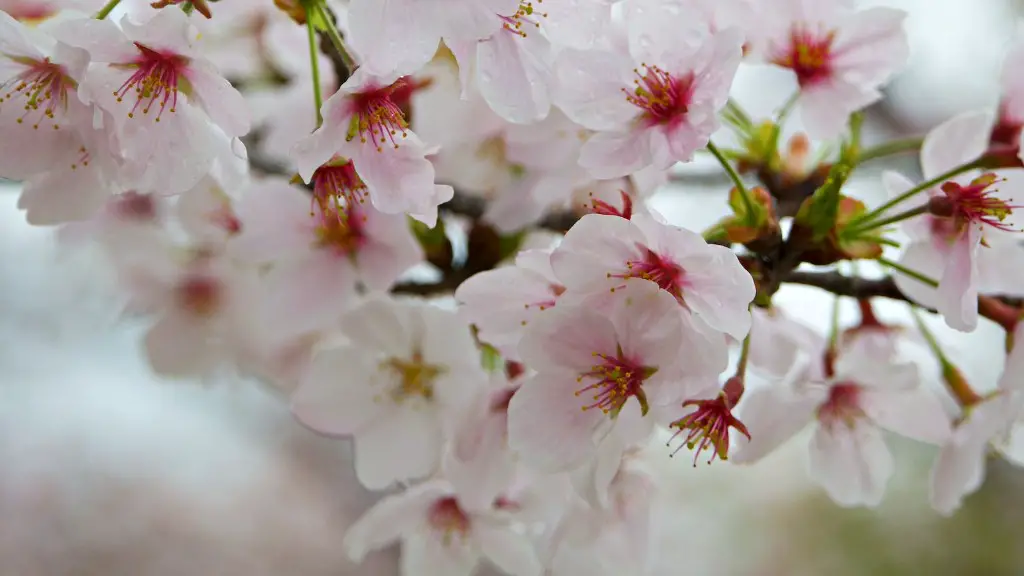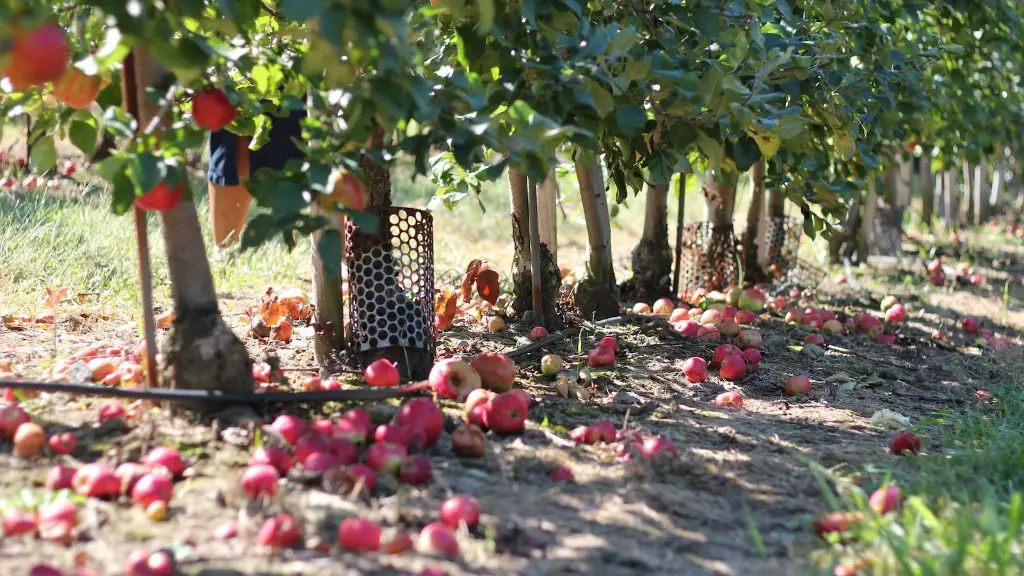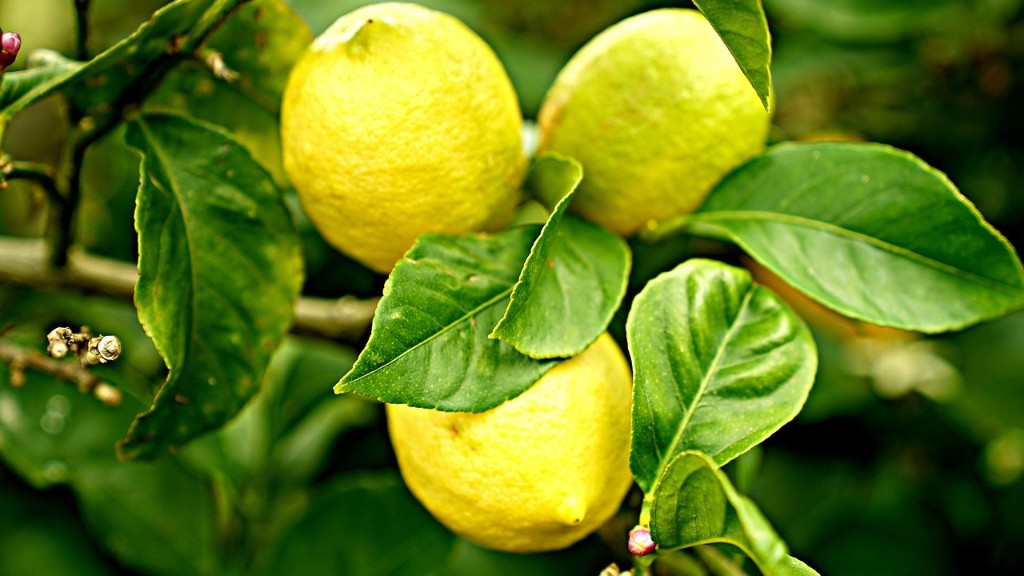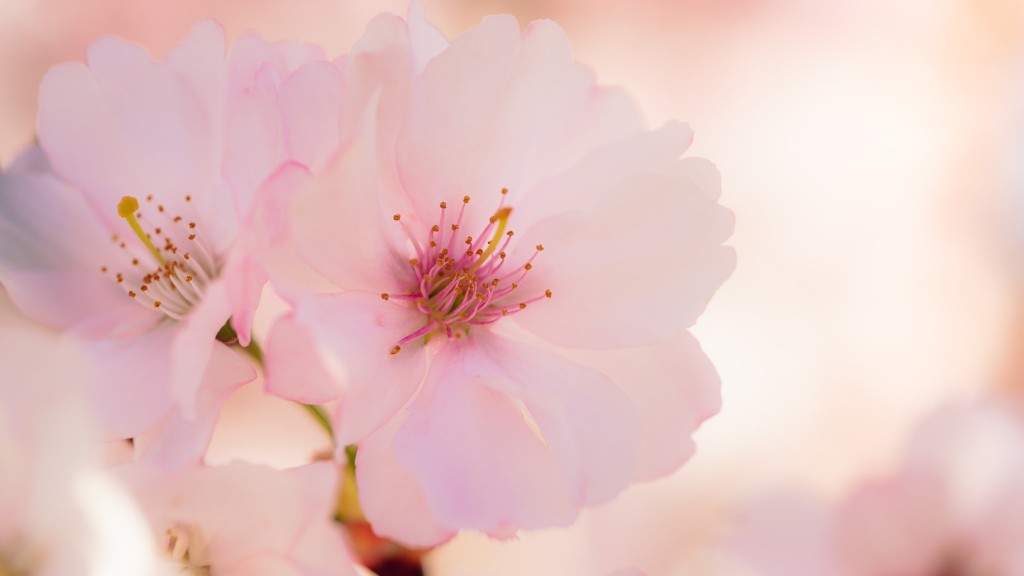Steps for Trimming a Young Cherry Tree
Trimming a young cherry tree is a relatively simple task with many benefits for both the tree and its owners. With proper understanding, the job can be completed satisfactorily without harming the tree. This article outlines the steps to be followed when trimming a young cherry tree.
To begin, it is important to gather the necessary tools. Pruning shears are the most important tool, as they will be used to make the cuts to the tree. A pair of lopping shears may also be needed for making larger cuts. Protective gloves should also be worn as some of the branches may have thorns. A ladder may also be necessary if the tree is taller than the person trimming it.
The next step is to inspect the tree. This inspection should be done carefully in order to identify any dead or diseased limbs, as well as any that are overcrowding the tree or rubbing against each other. The goal is to remove these limbs in order to help the tree maintain its shape and prevent the spread of disease, pests, and other problems.
Once the limbs to be removed have been identified, the next step is to make the cuts. Pruning shears should be used for cutting off small, slender branches. Larger branches can be cut using lopping shears. It is important to make the cuts slightly away from where the branch meets the trunk in order to reduce the risk of infection.
It is important to note, however, that it is possible to over-prune a young cherry tree. This can cause damage to the tree and reduce its productivity, so it is best to err on the side of caution and trim a bit less than more.
Once all of the desired trimming is complete, the last step is to apply wound dressing in order to reduce the risk of infection or rot. The dressing should be applied to the area of the branch that was cut away. This can help protect the remaining stump of the branch and will also help the tree heal faster.
In conclusion, trimming a young cherry tree is relatively easy and can be done with the right tools and understanding. With proper care and attention, the tree should remain healthy for many years to come.
Choosing the Right Time of Year for Trimming a Young Cherry Tree
Choosing the right time of year for trimming a young cherry tree is a critical step to ensuring the longevity of the tree. The best time to trim the tree is when it is still actively growing, typically during the late spring and early summer. This is when the tree is at its healthiest, so it can better withstand the stress of trimming.
It is also important to avoid trimming the tree after a long dry spell, as this can increase its vulnerability to infection or rot. An ideal time to trim the tree would be after a period of rain, which will make the sap run faster, helping the open wounds heal more quickly.
With regards to the season, summer is typically not the best time to trim the tree, as it can become too hot to do the job safely. Late fall and winter are better options as the weather is cooler and the tree is dormant. However, if the trimming is extensive, it should be done in the spring when the new growth arrives.
In addition to the season, it is also important to consider the climate when selecting a time to trim the tree. In climates with cooler winters and rainy springs, trimming should be done in the spring while in climates with warmer winters and dry springs, trimming should be done in the fall.
Finally, when trimming a young cherry tree, it is important to not trim it too severely at one time. Too much pruning can shock the tree and can cause it to be unhealthy for many years. It is best to take it slow and increase the amount of trimming over time if needed.
Potential Problems to Avoid when Trimming a Young Cherry Tree
When trimming a young cherry tree, there are a few potential problems to avoid in order to ensure the health of the tree. First, it is important to avoid cutting too deeply into the tree and removing too much of its branches. This can shock the tree and can even cause permanent damage.
Another potential problem is failing to properly seal the open wounds. This can lead to infection or rot, so it is important to apply wound dressing after the trimming is complete. This will help the remaining stump of the branch heal faster and help protect the tree.
It is also important to use sharp and clean tools when trimming the tree. Dull and dirty tools can damage the tree and can even introduce infections, so it is best to take the time to properly clean and sharpen the tools before beginning.
Finally, it is important to avoid trimming the tree too late in the season. In cold climates, trimming too late in the season can cause frost damage, as the tree has not had enough time to heal from the trimming. It is best to trim the tree before the cold weather begins.
Factors to Consider when Choosing a Young Cherry Tree for Trimming
When selecting a young cherry tree for trimming, there are a few factors to consider. The most important of these is the tree’s health. A healthy tree is more likely to withstand the stress of trimming and will be more likely to remain healthy for many years.
It is also important to consider the size and shape of the tree. Larger trees can be more difficult to trim and may require advanced tools and knowledge. Conversely, smaller trees are easier to work with, as they require less time and effort.
The location of the tree is also a factor to consider. Trees in shady, moist environments are typically healthier than those in drier, sunnier areas. It is best to select a tree that is in the ideal location for optimal health.
Finally, it is important to inspect the tree for any signs of disease or infection before beginning the trimming process. If any symptoms of disease or infection are present, it is best to avoid trimming the tree as it may cause further damage.
Equipment Needed when Trimming a Young Cherry Tree
When trimming a young cherry tree, there are a few pieces of equipment that are essential for the job. The most important is pruning shears, as they will be used to make the majority of the cuts. Larger branches may require a pair of lopping shears in order to make the cuts safely.
It is also important to have a ladder on hand, if necessary. This may be necessary for taller trees, as it can be difficult to trim the upper branches without one. In addition, protective gloves are also important as some of the branches may have thorns.
A saw may also be needed for larger branches. A handsaw can be used for this, but a power saw may be necessary for larger trees. Finally, wound dressing is also important to have on hand as this will help seal the open wounds left by the trimming process.
Benefits of Trimming a Young Cherry Tree
Trimming a young cherry tree provides a variety of benefits to both the tree and its owners. One of the most important benefits is that it can help the tree maintain its shape and size. Pruning can also help remove dead or diseased limbs, reducing the risk of infection or rot.
Trimming can also help to encourage growth and fruit production. With its excess limbs removed, the tree can direct its energy towards producing new branches and fruit. This can help increase its overall productivity over the years.
Finally, trimming can help improve the aesthetics of the tree. The trimmed tree will have a more uniform shape and will look much more attractive than an untrimmed tree. This can help to enhance the overall look of the landscape.
Conclusion
Trimming a young cherry tree is a relatively straightforward process with many advantages. However, it is important to understand the steps and considerations involved in order to do it safely and properly. With the right tools, knowledge, and care, the tree can remain healthy and productive for years to come.





